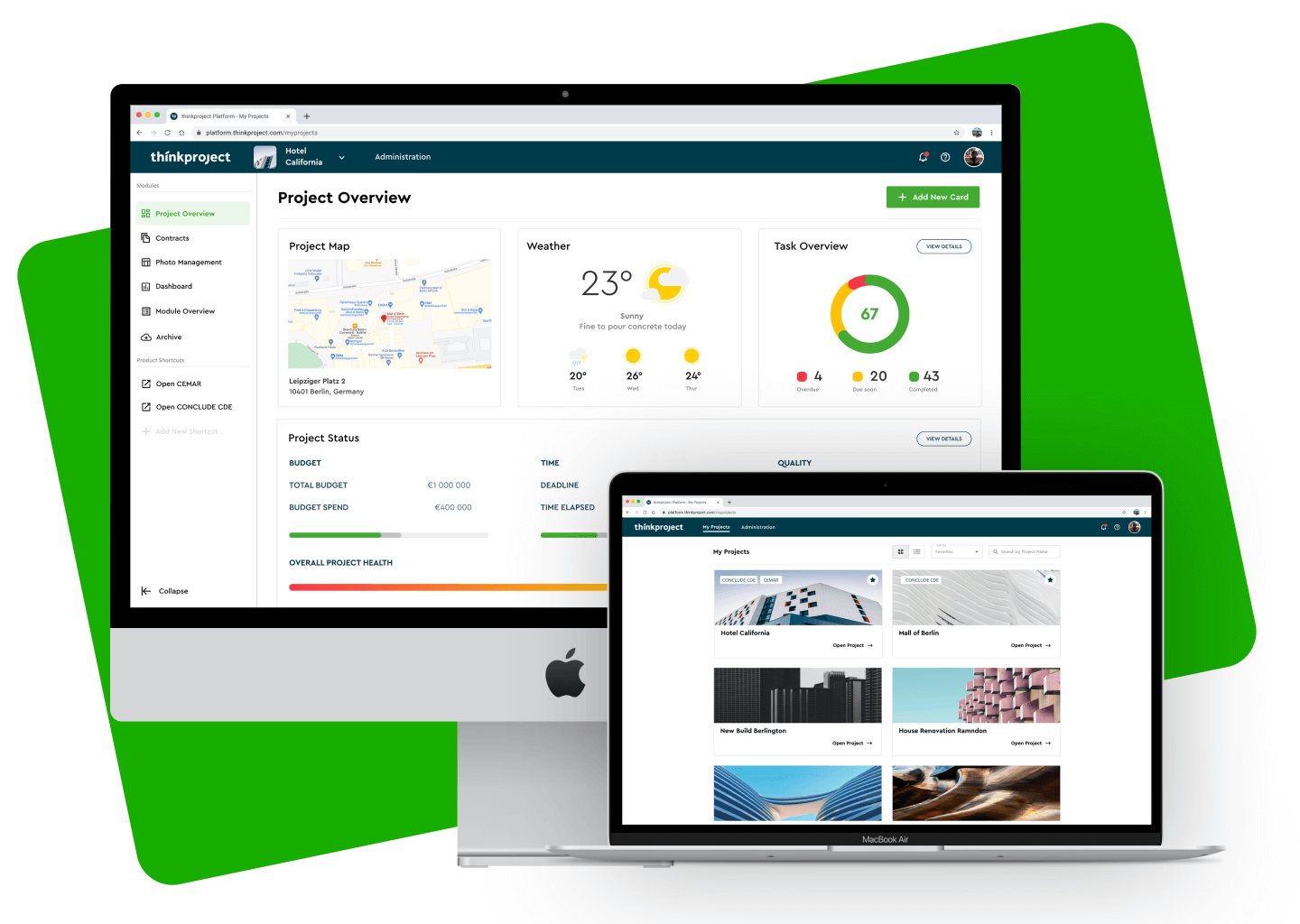End-to-End UX Design Vision for a B2B Construction Platform
PRODUCT DESIGN CASE STUDY
PROJECT BRIEF
Thinkproject is a leading construction intelligence platform, driving digital transformation in the industry. Through multiple acquisitions, we inherited a variety of tech stacks and UX maturity levels, resulting in inconsistencies across our products. To address this, our leadership launched a platform initiative to integrate and unify 9 independently sourced solutions, creating a more seamless and cohesive user experience. I developed an end-to-end UX design concept that continues to serve as a north star vision for the product’s future direction.

Challenge
As a Head of UX/UI Design, I had to unify 9 solutions into a cohesive platform experience, addressing fragmented tech stacks and inconsistent UX caused by rapid growth through acquisitions.
Constrains
With no access to new user interview candidates and limited time for recruitment, I focused my user research on existing personas and internal stakeholders.
Impact & Results
A high-fidelity design vision, aligned with C-level stakeholders for the Construction Platform with a Photo Module MVP, accelerated implementation and acted as a north star for the entire company.
MY Process
1️⃣ Building Empathy
With limited time and budget, I defined most problems and needs using existing personas from previous projects and marketing insights.
2️⃣ Journey Mapping & Flows
I created user journey maps for the 3 most critical use cases in the photo management system, starting each with a scenario to build empathy with the user from the beginning.
3️⃣ Solution Design
I leveraged our design system to quickly generate high fidelity prototypes based on the user flows.
In addition I sketched low-fidelity prototypes to develop the interaction design.
4️⃣ Testing Designs
We conducted five remote usability tests to validate the solution.
I ran the interviews while my team members documented feedback in real time using a Miro template with virtual sticky notes.
Building Empathy
Since we didn’t have the time or budget to conduct a lengthy user research, I defined most problems and needs based on existing personas that we defined with other projects and the marketing team.

Proto Persona Peter Project Performer
1️⃣ I need to see role-specific information so that I can quickly access the most relevant data for my responsibilities without sifting through unnecessary details.
2️⃣ I need clear project management KPIs to monitor budget, timelines, safety compliance, and overall project progress at a glance.
3️⃣ I need to manage project photos efficiently so that I can document site conditions, track progress, and share visual updates with my team and stakeholders.
Journey Mapping
Based on business goals and user insights, we prioritized a Project Dashboard and Photo Management functionality as the core focus for the MVP.
I developed user journey maps for the most critical use cases for the photo management functionality and KPI Dashboard in FigJam. Each map I started with a user story to help build empathy with the user right from the start.

User Journey
Solution Design
After logging in, users select their project. This was a breakthrough for Thinkproject. Instead of focusing on individual products, we shifted to a project-based approach, aligning with how construction professionals work and seamlessly integrating our solutions in one place.
Previous user interviews revealed that Budget, Time, and Quality are the key metrics for construction projects. This insight led us to design a project health-focused dashboard, putting these metrics front and center.
The most important function for users was to upload new photos and filter existing photos by date, which led us to launch the Photo Module as the first full functioning feature for the platform.
Adding precise comments on photos enables construction managers to document progress and flag defects on specific dates.
Test Designs
I conducted in-house usability tests with team members and stakeholders. As with this usability testing, I prioritize real-time information gathering and synthesis simultaneously in any user research activity, avoiding lengthy analysis sessions.

Detail of Miro Template for Usability Testings
OUTCOME
- A product design vision that aligned stakeholders and C-level executives, driving momentum for a new product direction at Thinkproject.
- The photo management module allowed construction managers to quickly upload, review, and comment on photos, significantly streamlining documentation and progress-tracking workflows.
LEARNINGS
- The Thinkproject Design System enabled rapid MVP development, allowing us to complete it in just 3 weeks.
- Focus on Design Patterns: For table stakes features where users are already familiar and have ample experience, identifying and leveraging existing design patterns is invaluable.




